ORIGINAL ARTICLE:https://pr.ntnu.edu.tw/ntnunews/index.php?mode=data&id=21788 (2023.08.09)
(English Version Powered by ChatGPT, Edited by Serena H.)
According to United Daily News, in 1999, Taiwan only hosted three marathons with a few thousand participants. But, over 700 running events, by 2019, were held nationwide, with some attracting over 10,000 participants. As walking and running sports become increasingly popular, the question arises: How can we improve our running techniques for better health and performance?
Prof. Tzyy-Yuang Shiang, from the Department of Sports Science at National Taiwan Normal University, has spent years researching the relationship between human physiology and running efficiency. Previously, we believed that reducing energy expenditure during running would enhance technique. However, Shiang discovered that the key factor in running efficiency might not be what we expected.
Running Economy (RE)
Prof. Tzyy-Yuang Shiang noted that traditional methods for measuring running economy, as an indicator of running efficiency, relied on physiological markers, such as oxygen consumption at a specific speed, which reflects energy expenditure. Lower energy consumption indicates higher efficiency. However, this method is influenced by external conditions and individual physiological differences, and it requires using a treadmill with a breathing system, making it inconvenient.
He suggested, “If we can develop a physical efficiency indicator for running, it would eliminate the effects of environmental and physiological factors, allowing for a more straightforward observation of running technique differences, and offer guidance for posture adjustments to improve running efficiency.”
Running style and posture vary between individuals, depending on factors like training. Shiang conducted experiments using sensors to compare two types of runners: one with a rear-foot strike and the other with a forefoot strike. Typically, rear-foot strikers are believed to use a longer ground contact time to compress the lower limbs, reducing airborne time and counteracting gravity to save energy. Forefoot strikers, on the other hand, store energy through the stretch and contraction cycle of the lower limbs, with reduced braking forces thanks to a landing closer to the body’s center of mass.
He explained, “We controlled the speed at 14.5 km/h and equalized oxygen consumption, so both types of runners had similar running economy. However, we found that forefoot strikers had a greater vertical amplitude, shorter ground contact time, and higher vertical impulse, which stored more elastic potential energy, leading to better running efficiency.”
In other words, a bouncier running style, as reflected in the dynamical parameters, is associated with better running performance. This finding contradicts previous studies. “Generally speaking, the average running frequency is around 160 steps per minute, but if you increase it to 175 steps per minute, you significantly improve efficiency. The key adjustment is changing your stride to shorter, quicker steps—similar to small, fast steps,” Shiang said.
He validated that the dynamic parameters reflect running economy and performance, and that he aims to further integrate multiple parameters to accurately predict running efficiency and performance, thus enhancing the application of sports science.
Scientific Innovation in Sports Gear
Prof. emphasizes that every person’s foot strike point differs, whether walking or running, so understanding the impact of insoles on the feet is crucial. He conducted experiments with different insoles and found that different designs significantly improved foot pressure and internal rotation speed during running. Specifically, “dual arch support insoles” were more effective in reducing foot fatigue during running compared to “longitudinal arch support insoles.”
He pointed out that the adaptability of sports shoes should be designed according to the characteristics of each sport. For example, running is a linear movement, so running shoes are designed to reduce longitudinal friction and enhance bounce. In contrast, badminton shoes focus on lateral and rotational support, strengthening stability during quick stops and directional changes. Basketball shoes, in addition to this, also need to provide protection for vertical jumps and prevent ankle sprains.
He used a metaphor to describe the role of equipment in enhancing performance, likening different sports gear to different martial arts skills. Only by choosing the right equipment can athletes improve their performance and reduce the risk of injury.
Scientific sports + soft power = life + health
Prof. Tzyy-Yuang Shiang highlighted that while shoes used to have leather or fabric uppers, today, there are more materials available, and even the midsole can be replaced. He demonstrated removing a thick midsole from a shoe, saying, “The midsole is often the part that wears out most quickly. By replacing it while the upper and sole remain intact, we can extend the lifespan of badminton shoes.” He also mentioned that with advancements in weaving technology, shoe uppers now offer better coverage, breathability, and overall lighter weight, providing enhanced foot protection.
Shiang further emphasized Taiwan’s strong position in various industries, stating that aside from large companies, there are many “hidden champions,” particularly in cycling, textiles, and sports. For example, Taiwanese shoe manufacturers account for one-sixth of the production for a major U.S. footwear brand, and the jerseys worn by teams in the World Cup were either made or supplied with materials from Taiwan. He expressed pride in Taiwan’s R&D capabilities, saying, “We shouldn’t underestimate ourselves—Taiwan’s research and development strength is impressive!”
Finally, Shiang remarked on the importance of moving sports science beyond the laboratory and into practical, everyday applications. “As researchers in this field, we have two main missions: one is to improve public health by promoting more knowledge about exercise, and the other is to help Taiwan’s sports industry grow by developing products that meet people’s needs and generate more value. Ultimately, the real importance lies in the practical integration of science and daily life.”
(Source: Human Island (original link) / Interview and article by Shen Mian / Photography by Chen Yi-Xuan / Editing by Zhang Jie-Kai / Final review by Hu Shi-Ze)
Research Sources:
- Tzyy-Yuang Shiang (2015). “Analysis of Gait Asymmetry in Walking and Running.” National Science Council Special Research Program (General Research Program).
Tzyy-Yuang Shiang (2018). “Analysis of the Number and Position of Foot Pressure Sensing Components.” National Science Council Special Research Program (General Research Program).
Tzyy-Yuang Shiang (2019). “Development of Smart Badminton Shoes for Monitoring Exercise Intensity.” National Science Council Special Research Program (Industry-Academia Collaborative Research Program – Applied Type).
Tzyy-Yuang Shiang (2020-2021). “Development and Application of Running Kinematics Efficiency Indicators.” National Science Council Special Research Program (General Research Program).
Tzyy-Yuang Shiang (2021). “Exploration of the Benefits of Supporting the Foot’s Transverse Arch.” National Science Council Special Research Program (Industry-Academia Collaborative Research Program).
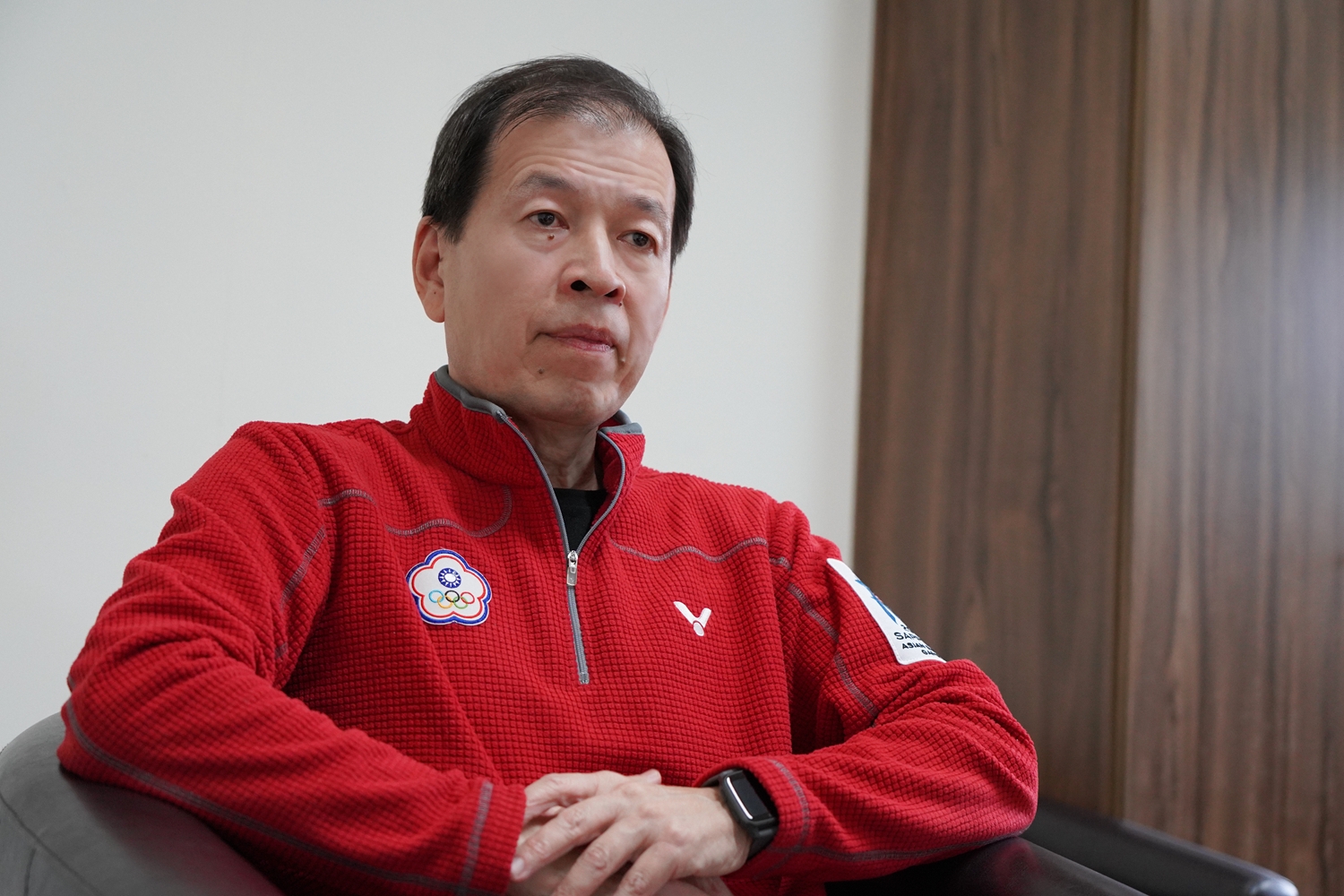
相子元教授從研究到研發,都卓有成就。(攝影/陳怡瑄)
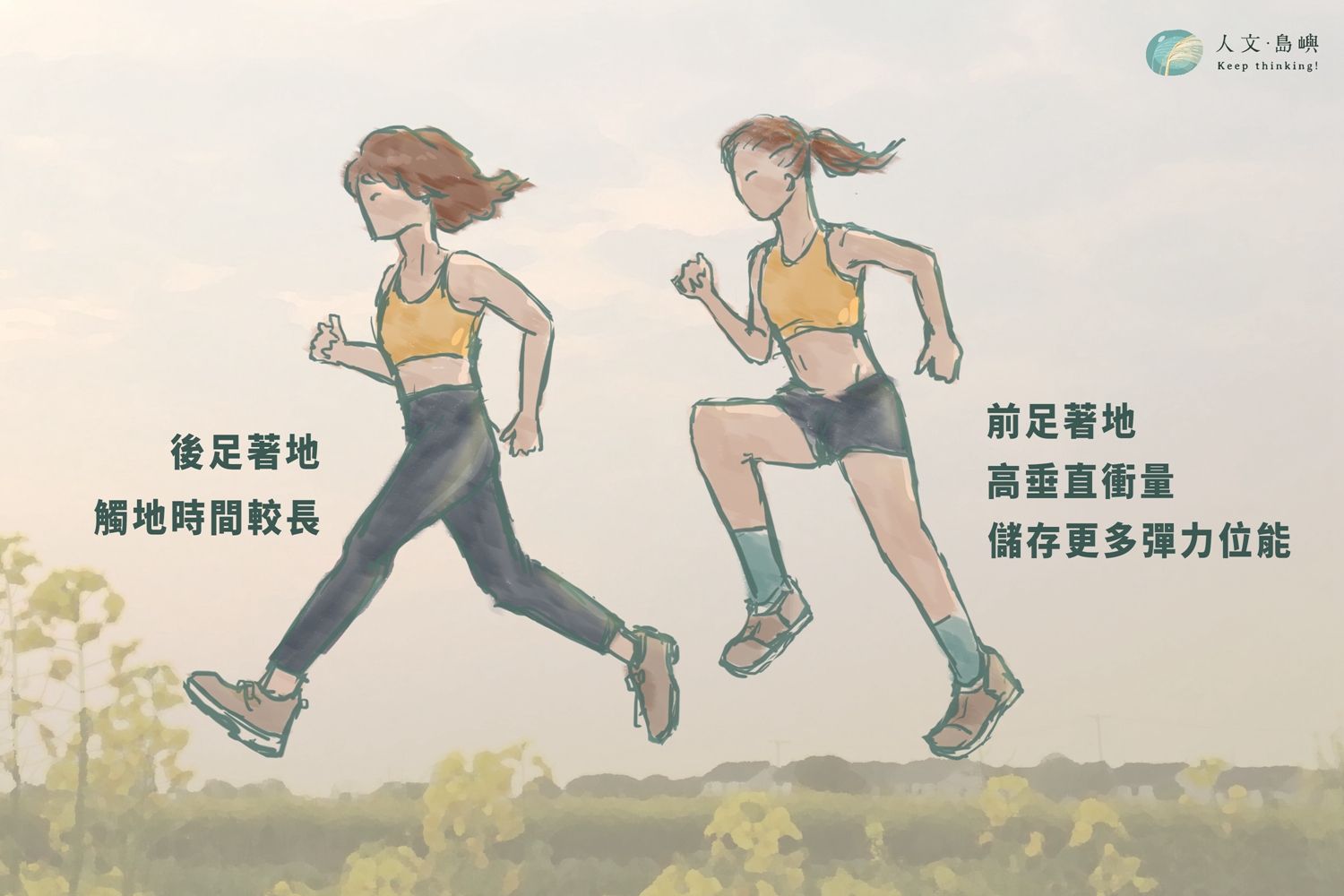
跑者足部的著地位置,影響了跑者的跑步表現。(繪圖/張力予)
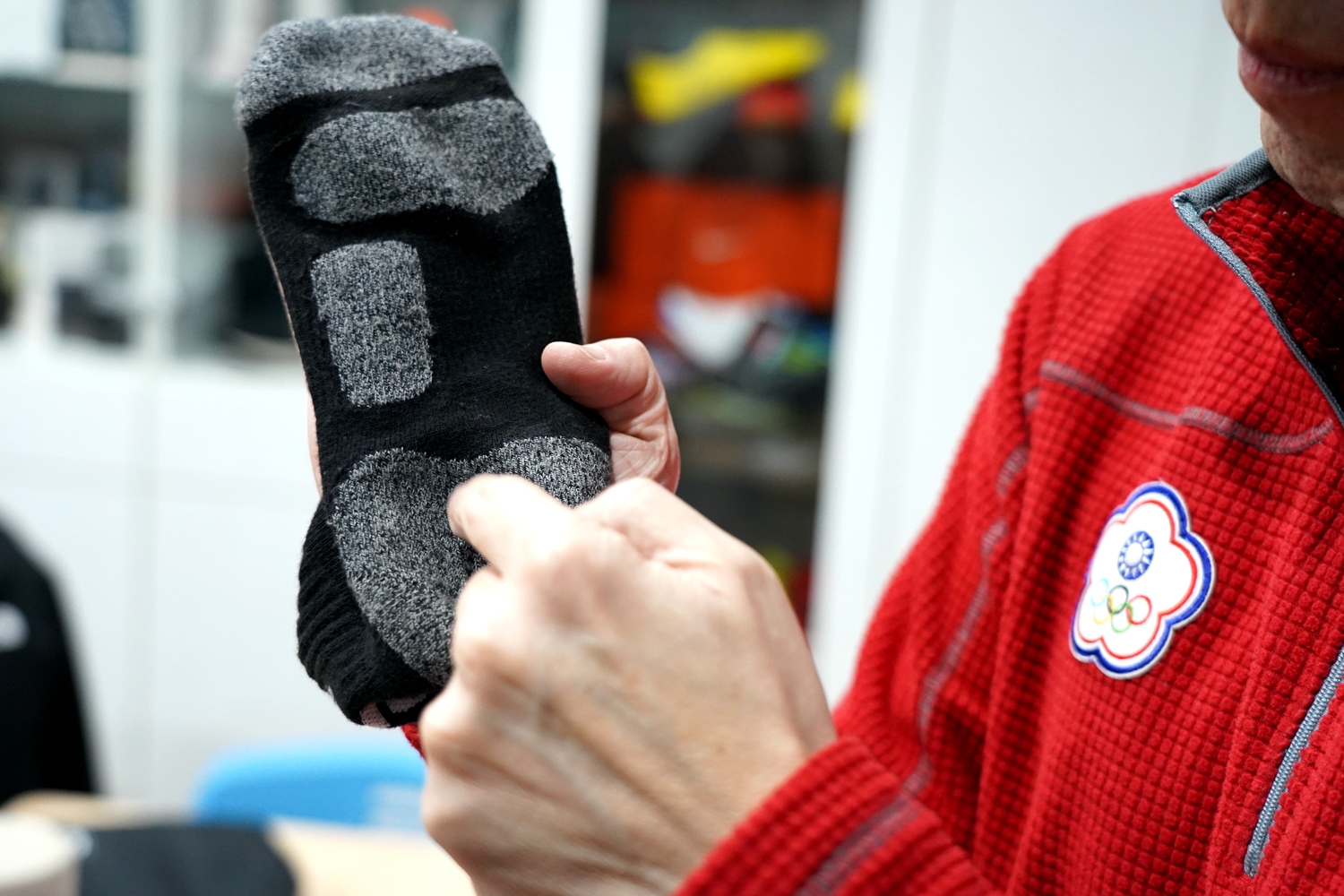
因緣際會下,相子元藉由臺師大創新育成中心的媒合,和臺灣自有品牌公司展開產學合作,創造出臺灣自有的運動機能襪。(攝影/陳怡瑄)
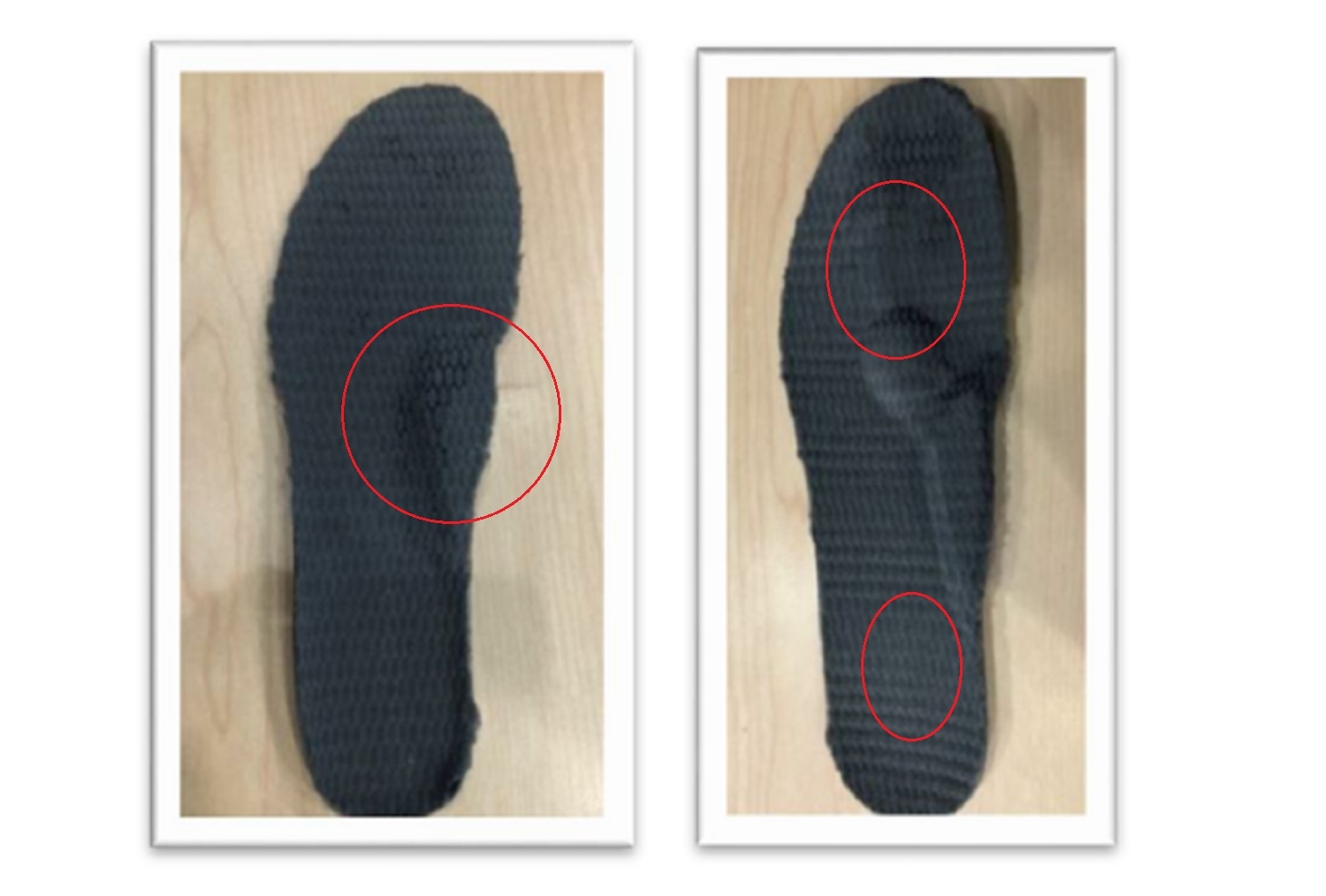
左圖為內側縱弓支撐鞋墊;右圖為雙足弓支撐鞋墊。(圖片來源/相子元。足部橫弓支撐之效益探討,P.6
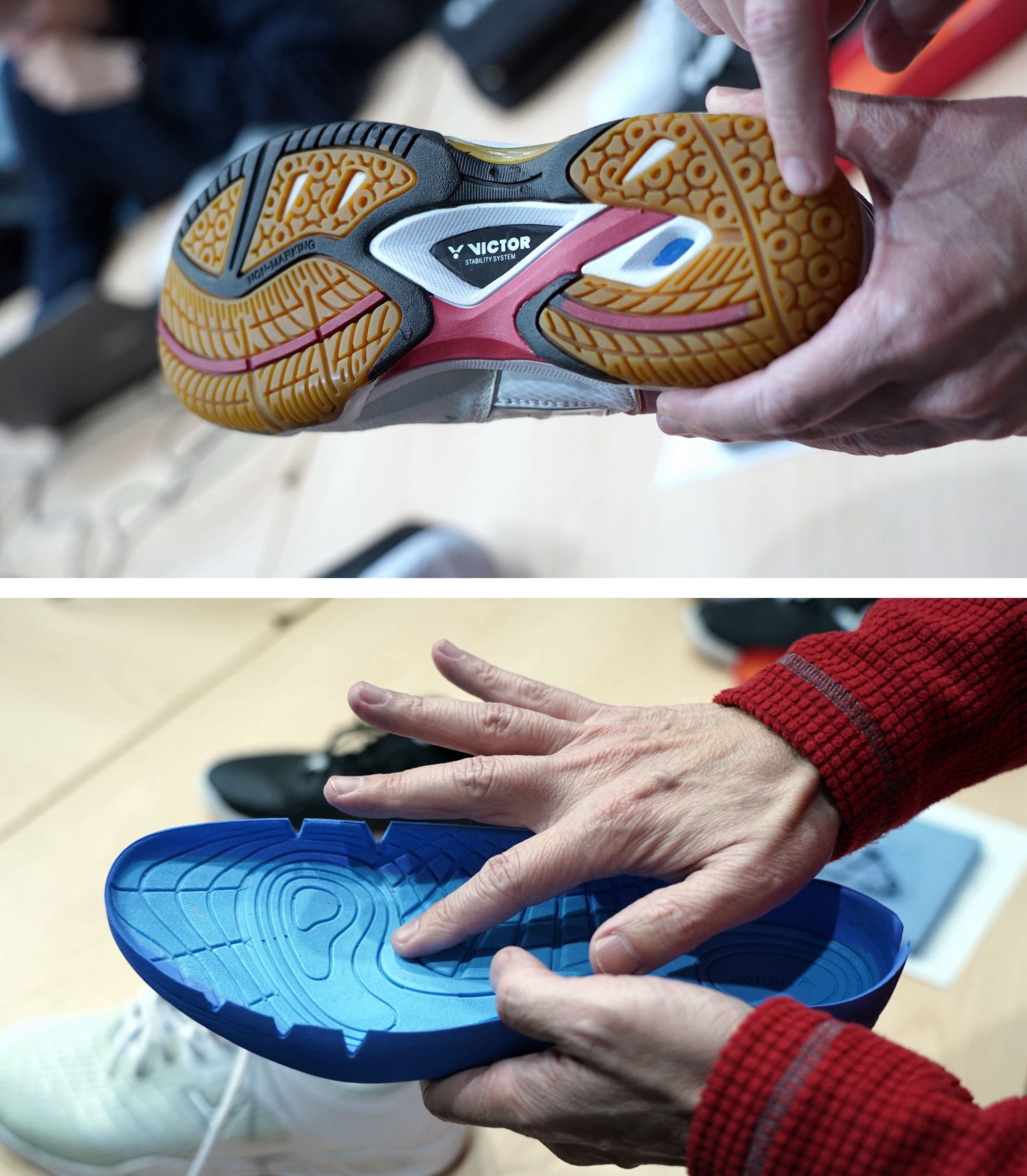
相子元研發的運動鞋內外紋路都是有實質益處的,並非全然為了美觀而已。(攝影/陳怡瑄)